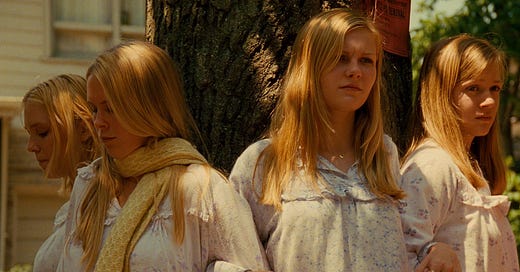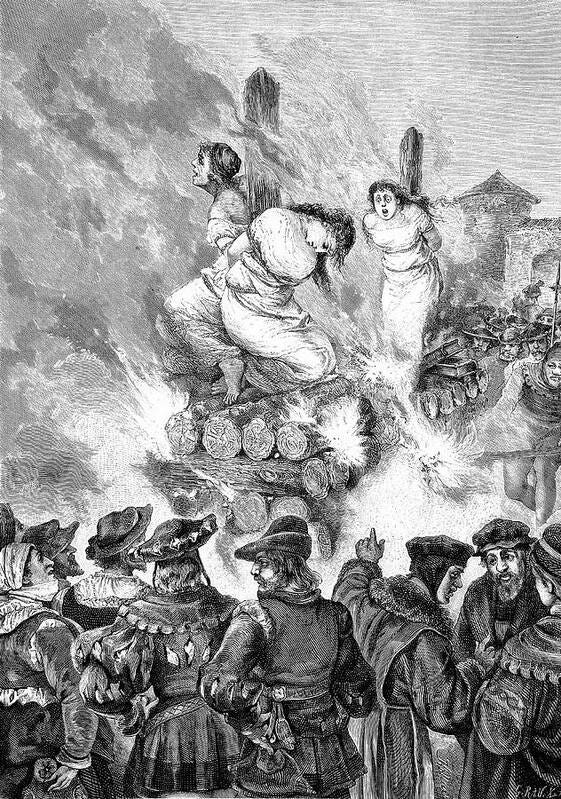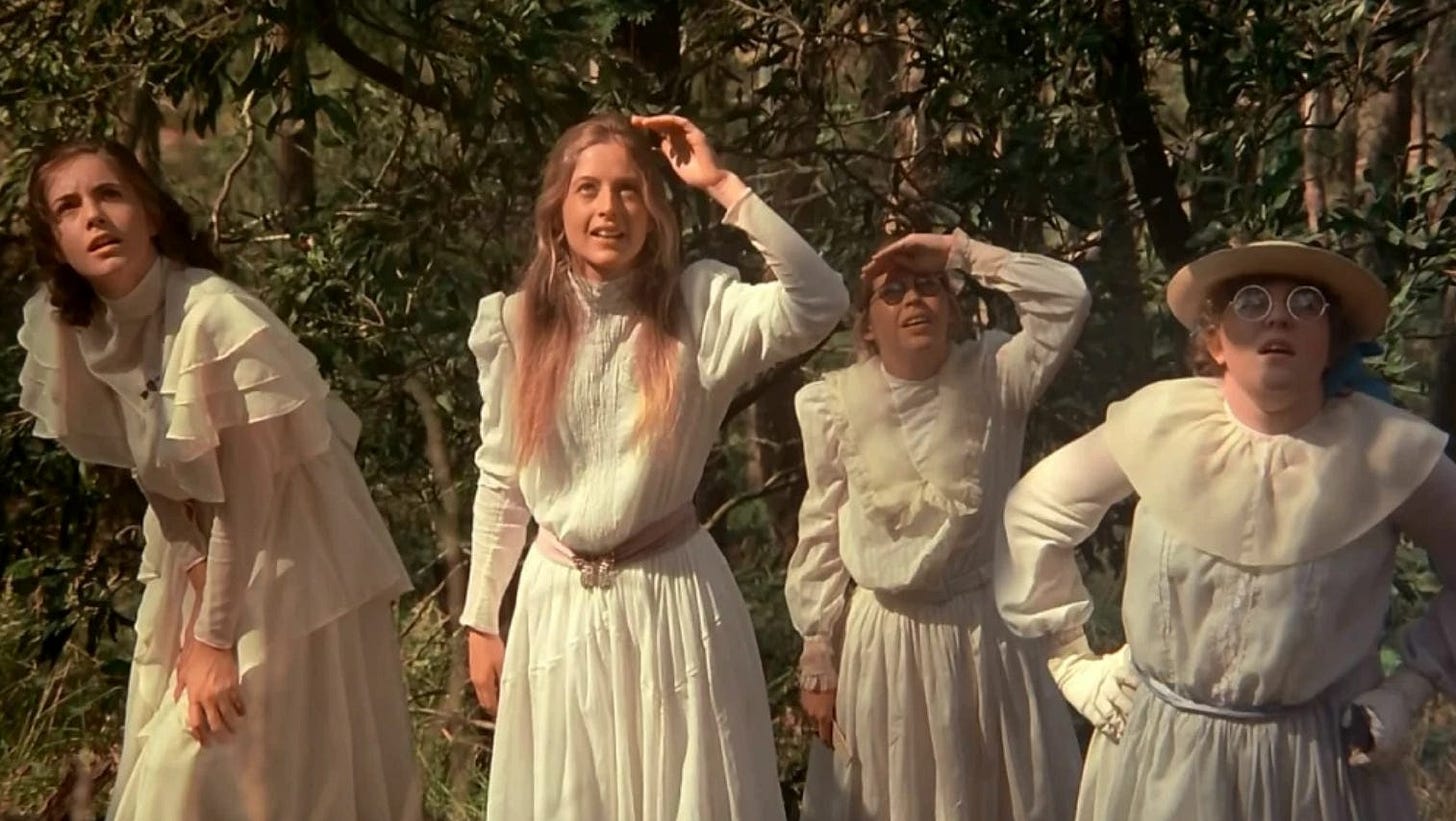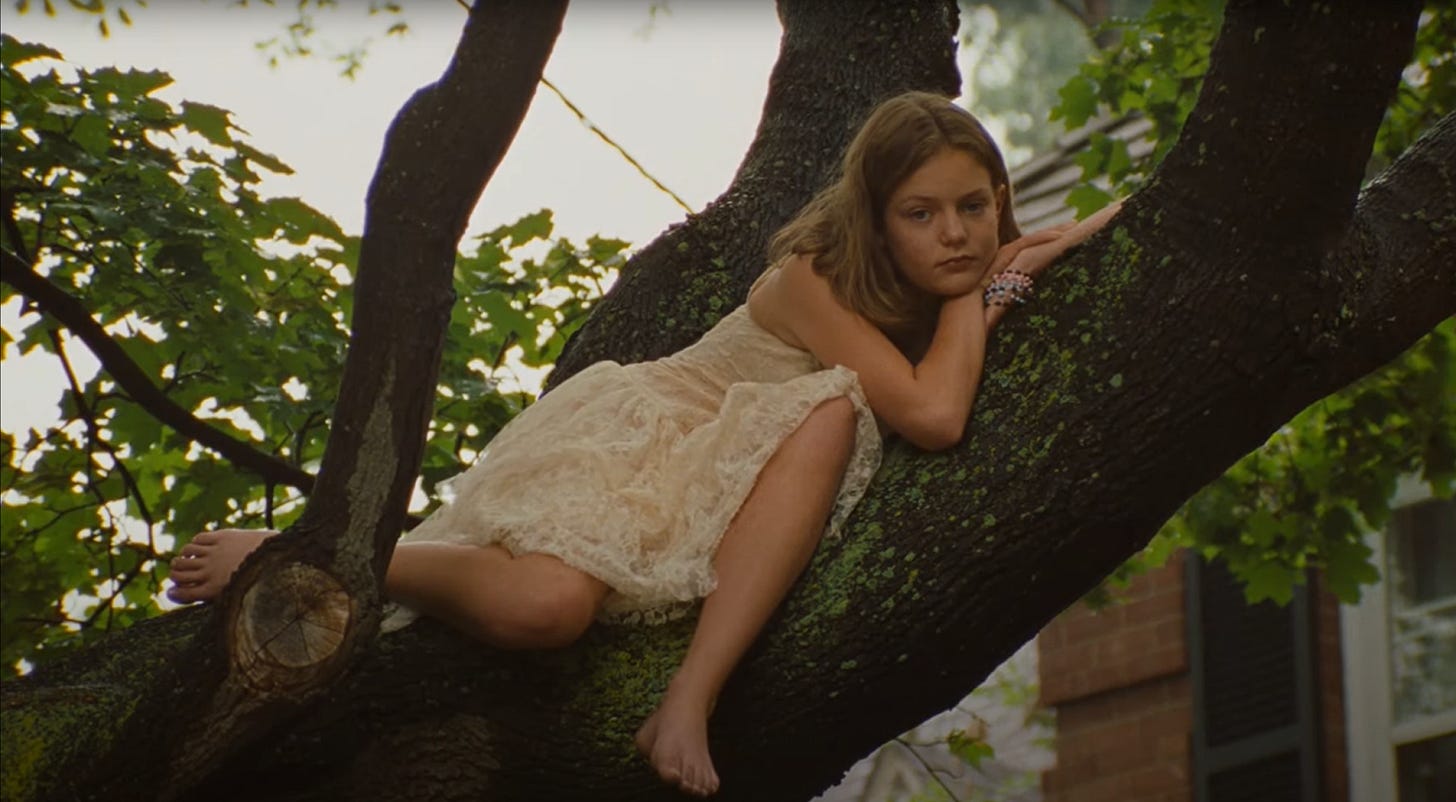'The Virgin Suicides' (1999) at 25: Part I
On the citational circle motif in Sofia Coppola's feature debut
With ruthless efficiency, the first 45 seconds of Sofia Coppola’s The Virgin Suicides (1999) set the film’s dreamy, melancholic tone, confirming along with the title the darkness that lies ahead. Idyllic shots of verdant suburban lawns, a boy shooting hoops, and a father grilling burgers are undermined by increasingly loud sirens on the approach and by two city workers in orange jumpsuits nailing a red “notice of removal” tag into a diseased Elm tree. Three shots later, we are presented with a young girl, still and unblinking, in a bathtub of crimson-tinged water. We come to learn that Cecilia Lisbon, 13, survived this suicide attempt but succeeds in a subsequent one, and by film’s end, her four elder sisters will also die at their own hands.
This opening sequence sets the stage for a later confrontation that Coppola freights with meaning. As men with chainsaws and girls in nightgowns converge on the Lisbons’ front lawn, circles proliferate. The surviving sisters form a ring around a tree that, in short order, will be cut down, leaving behind a stump likewise composed of rings.
It’s quite an image: the girls’ backs to the bark and arms interlocked, encircled by angry men charged with felling the dying Elm. The young women’s defiant gesture of shielding their late sister’s beloved climbing tree from a throng of adult men draws first the attention of the neighbors and then a local television news crew.
But for all its novelty, there is something familiar about this image. It calls to mind a time when New England was still new and when women who dared deviate from gendered norms and ways of being risked charges of witchcraft, punishable by burning at the stake.
The chain of associations doesn’t stop there. The Lisbon’s girls’ ankle-length white nightgowns also suggest Peter Weir’s wonderful Picnic at Hanging Rock (1975), which like The Virgin Suicides, concerns a confounding mystery involving adolescent girls and repressed sexuality.1
The tree is particularly imbued with meaning in Coppola’s movie, for Cecilia is early and often aligned with it. The neighborhood boys who narrate in voiceover as a collective “we” tell us that her journal, which they stole upon her death and pored over for years, commemorated each of her street’s fallen Elms. Ever morose, she also noted each time a species was newly designated endangered.
After city workers buy some time on the Lisbon Elm’s life by plastering a sizable hole in it, Cecilia presses her hand into the still wet putty, adding an index of herself to the organism that predates her and that, for a short while, will survive her. The neighbor boys, fascinated by and unable to fathom what motivated the Lisbon sisters that summer, even see her apparition perched in its branches, peering out at them with curiosity, as they did to her and her siblings.
Trees write the history of themselves in themselves. Each internal ring marks a year and provides a partial view into its life: fat bands tell of health and plentitude, thin ones of drought or distress. The young women who encircle the tree likewise mark time. Offspring of devout Catholics, they are Irish quadruplets, separated each by one year, and they lock arms to shield the already dying tree from the blade.
The girls’ nighties speak too of their bleak circumstance: midday, yet still in their pajamas; not dressed for school because their parents no longer permit them to attend; submitting, for the first time in weeks, to the gaze of prying eyes but rejecting any obligation to indulge it or perform for it.
Moments later, we see other trees razed from neighboring yards and workers hauling off branches. Coppola’s camera lingers for a moment on a tire swing lying in the grass. Again, the confluence of associations borders on unbearable: a childhood plaything discarded, innocence lost; yet at the same time, its constitutive parts—a rope and a sturdy protrusion—make for an effective means of self-annihilation, as young Bonnie will later demonstrate in the family rec room. (Mary’s scarf in the above Elm-circling shot also suggests a noose.) But on its own, the tire, itself a circle, is a figure of mobility and escape, especially in a film set in the suburbs of a then still-thriving 1970s Detroit. This potentiality is made all the more poignant by the narrating boys’ fantasy of rescuing the Lisbon girls from their parental prison to depart on open roads for a promise-filled elsewhere.
But that dream is short-lived. Later in the film, in an extension of the pervasive circle motif, high school lothario Trip Fontaine and friends escort the surviving Lisbon girls to the homecoming dance. Before arriving, the teenagers park near the high school to allow Lux to smoke a cigarette. She takes a drag, tilts her head backward, and expels a smoke ring. One of the boys, sophomoric Conley, quickly reaches up with his index finger to break the circle and stop its ascent. “Don’t let it die a virgin,” he quips. But, excepting Lux, this is the fate that awaits the young women whose deaths lend the film its title.
Part II will post next week.
I shall return to Weir’s film in Part II.








